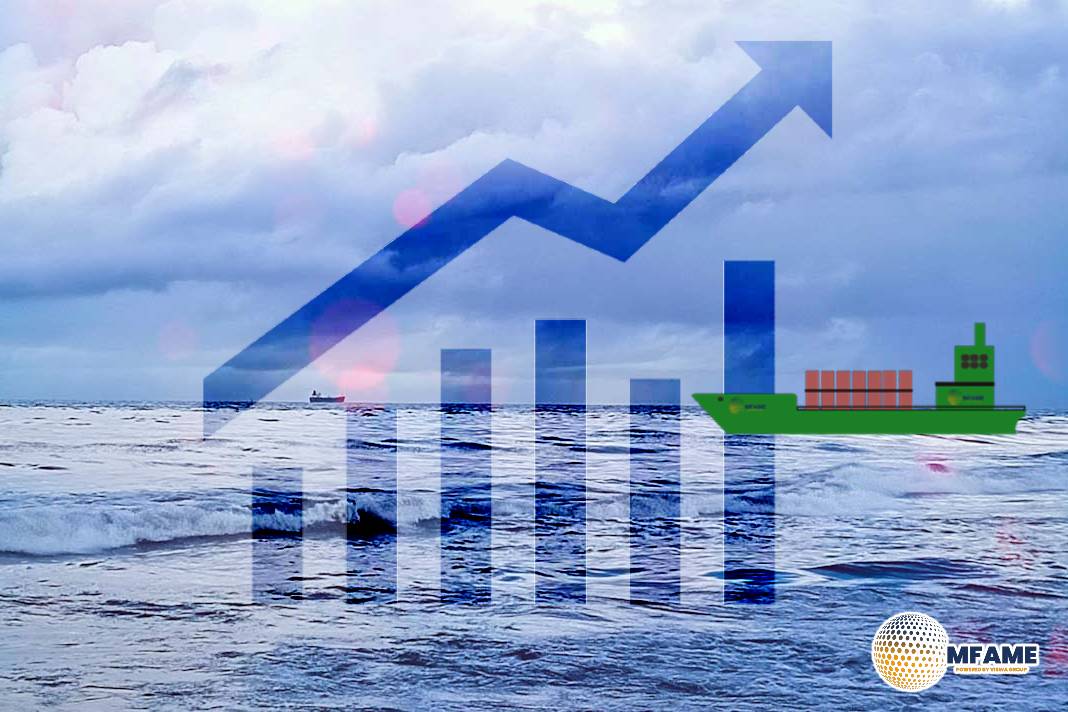 Shippers are grappling with unprecedented challenges as global supply chain disruptions continue to unfold, impacting transit times and rates. Vessels rerouted around the Cape of Good Hope from Asia to Europe are causing longer transit times, prompting shippers to expedite orders.
Shippers are grappling with unprecedented challenges as global supply chain disruptions continue to unfold, impacting transit times and rates. Vessels rerouted around the Cape of Good Hope from Asia to Europe are causing longer transit times, prompting shippers to expedite orders.
However, equipment shortages in Asia, delayed backhaul voyages, and container release restrictions are creating a highly competitive and costly environment, says an article published on loadstar website.
Summary
- Global supply chain disruptions are causing unprecedented challenges for shippers, impacting transit times and rates.
- Vessels rerouted around the Cape of Good Hope from Asia to Europe are causing longer transit times.
- Equipment shortages in Asia, delayed backhaul voyages, and container release restrictions are creating a highly competitive and costly environment.
- Shippers are facing a scarcity of containers in Asia, leading to restricted container releases primarily for large-volume contracts or those willing to pay substantial premiums.
- Carriers are reportedly “cherry-picking” higher-paying spot cargo and rolling over lower-rated contracts.
- Carriers are offering “eye-watering rates” exceeding $10,000 per 40ft for space on China-North Europe sailings in February.
Container Scarcity And Premium Pricing
Shippers are facing a scarcity of containers in Asia, leading to restricted container releases primarily for large-volume contracts or those willing to pay substantial premiums. Even with significant payments, there is no assurance that containers will be shipped before the Chinese New Year on February 10. Carriers are reportedly “cherry-picking” higher-paying spot cargo and rolling over lower-rated contracts.
Eye-Watering Rates And Uncertain Deliveries
Anecdotal reports reveal carriers offering “eye-watering rates” exceeding $10,000 per 40ft for space on China-North Europe sailings in February. Shippers paying relatively low freight rates are being told that long-term rate agreements may not be honored, pushing them onto the more volatile spot market. Xeneta chief analyst Peter Sand advises against seeking the lowest price in such a climate, as carriers prioritize higher-rate spot market agreements over lower-rate contracts.
Surging Spot Rates Across Trade Routes
Spot indices reflecting short-term rates are experiencing significant surges. The WCI North Europe component has jumped 23% to $4,406 per 40ft, marking a 164% increase since December 21. Rates from Asia to the Mediterranean have climbed 25%, reaching a 166% increase. Transpacific rates to the US west coast and east coast have risen by around a third and 36%, respectively, since December.
Anticipated Rate Increases And Peak Season Surcharges
Transatlantic shippers face impending rate restoration and peak season surcharges set to take effect in February, following the required 30-day notice period. Carriers are expected to divert empty containers and surplus vessel capacity to backhaul Asia voyages, further driving up transatlantic rates in the coming weeks.
As the global supply chain disruption persists, the shipping industry is navigating through a complex landscape with uncertain timelines and escalating costs. Shippers are urged to adapt to the current market dynamics and be cautious of relying solely on low freight rates.
Did you subscribe to our daily Newsletter?
It’s Free! Click here to Subscribe
Source: loadstar























